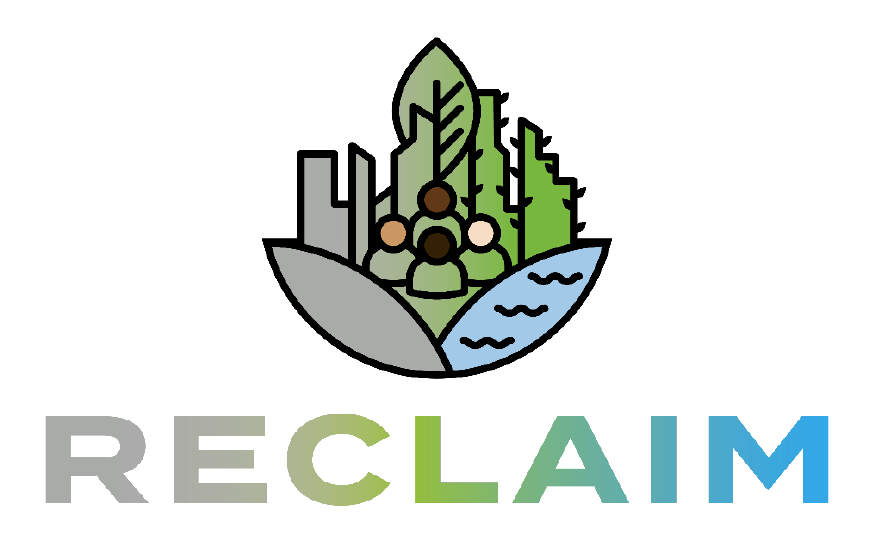How do we value the green, blue, and grey infrastructure of canals and urban waterways, and what is their potential for urban regeneration?
Photo of the Digbeth Branch Canal Tunnel by Patrick Anderson.
Canals and canalsides are valuable pieces of infrastructure for UK’s urban and economic development. For Birmingham, canals represent one of the visible testimonies of its industrial past, and the city prides itself on having a network even longer than Venice.
These were once the primary means of goods’ transportation between extractive areas to the main centres of consumption. However, their role has changed, gaining new meanings and significance, from transportation to enjoyment and from function to complex ecosystems, becoming an opportunity for urban development.
On October 13th, we gathered in STEAMhouse at Birmingham City University to carry out a one-day RECLAIM Plus funded workshop to understand the value and significance of the canal and canalsides’ green-blue-grey infrastructure of the Digbeth Branch Canal and Grand Union Canal in Digbeth, Birmingham. As there are many actors and interests linked to these areas, including our institution – BCU, we aimed to explore how relevant stakeholders, local community organisations, creative businesses and university researchers valued and defined the significance of these environments and how this information can support current urban regeneration processes in this area.
The workshop employed Photovoice as a primary method for research. This method aimed to involve participants as collaborators of knowledge production by capturing their interests and perceptions through a photographic device. Photographs became the evidence and instruments for elicitation, which were employed in conversations to explore the experiences of participants to canals’ environments.
The day started by introducing ourselves as workshop facilitators, Dr Miguel Hincapié Triviño from BCU College of the Built Environment, Dr Josephine Cornell, and Dr Deborah Earnshaw, from BCU College of Psychology. We began by explaining some theoretical and methodological considerations for the day, as well as the ethics of taking photographs in public space. Dr Nerea Calvillo, RECLAIM Network representative and Associate Professor at University of Warwick, also introduced the workshop by placing it in the overall frameworks of the RECLAIM project.
After the introductions, we headed for a walk from STEAMhouse along the Digbeth canal and canals junction. We then turned and continued along the Grand Union canal, passing by the canal locks, Banana warehouse, and the river Rea. After a short walk, we returned to the workshop space to print the selected photographs and begin with the focus groups for photo elicitation and conversations.
The focus groups were the centre of the activity. Participants had the opportunity to discuss about their interests, perceptions, and valuable aspects of the walk. Emerging themes transversally overlapped aspects of memory, events, and activities of the past with recent experiences of the qualities of these places. There is a consensus that green patches of the sidewalks are highly significant, with participants referring to their “wildness”, “aesthetic”, and “natural” qualities, including a “dense vegetation” and the presence of “animal fauna”. These, often be considered left-over spaces, have “fortunately not been yet developed” and “add something special to the place”.
The ideas of space and place constantly intersected with topics of ownership and appropriation, which have relevant implication on how canals are managed and the various users that “compete” in these narrow paths. Canals are public corridors crossing areas of private ownership, and while we progressed in capturing their significance for more regular users: ramblers, boat users, cyclists, and local artists, we still need to carefully assess and evidence the influence of major landowners, e.g., Homes England, HS2 and BCU. The aims and values of the latter can be significantly different from the ones of recurrent users and their projects and interventions are already drastically changing this landscape.
Finally, canals and canalsides in Digbeth are somewhat neglected in regeneration processes but recently gained attention for their natural appeal and expressions of an industrial past. If we were to assess their integration in current policies and plans, more attention will be required to consider how the multiple users interact with their environments, what are their expectations for regeneration, and to whom current and future interventions will benefit.
We want to thank the workshop participants for their time and kind support in this one-day activity. As a continuation of the photovoice approach, we are preparing to disseminate the photographs and testimonies in a public exhibition in early 2024 to enable further conversations with other relevant stakeholders.
This work has been supported by the UKRI-funded RECLAIM Network Plus grant (EP/W034034/1).
By Dr Miguel Hincapié Triviño, Birmingham City University




